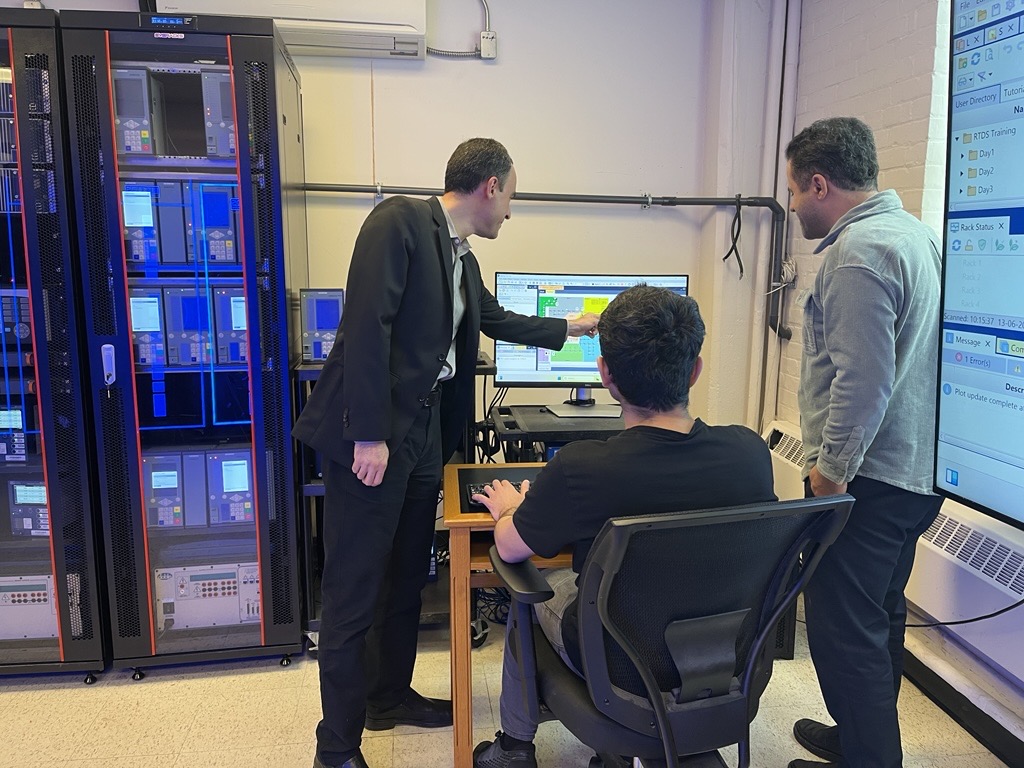
Ontario is in the middle of a major shift in how it generates and manages electricity. Even though the province already gets most of its power from low-emission sources, according to the Ontario government, demand is expected to climb by about 75% by 2050. To keep up with this demand, the province is seeking to expand its clean electricity supply and build more storage capacity.
Ontario’s current grid is largely powered by nuclear and hydroelectricity. According to Ontario’s Independent Electricity System Operator (IESO), nuclear provides roughly 59% of electricity, with hydro accounting for about 23%. Wind and solar play a smaller role – around 9% and 2%, respectively – however, Ontario still leads the country in installed wind capacity, and has about 80% of Canada’s solar energy generation.
As the grid shifts to include more renewable sources and decentralized energy from homes and businesses, it also needs to adapt to electricity flowing in both directions.
“Traditional protection devices of the power grid, like protective relays, were designed for grids with conventional power plants, such as hydro and nuclear plants,” says Ali Hooshyar, Associate Professor of Electrical and Computer Engineering and the Academic Lead of the Grid Modernization Centre at the University of Toronto.
But in the evolving grid of the future, power is going to be delivered mainly by renewable energy sources and battery energy storage systems, which use fundamentally different technologies for electricity generation. This shift requires updated technologies to properly manage and protect power delivery systems. Another complication on the current grid is that wind and solar energy sources are intermittent, with their outputs changing with the weather, seasons, or time of day. These fluctuations create challenges in keeping the energy grid stable.
Recognizing the need for a reliable, resilient smart grid, Climate Positive Energy, alongside the Department of Electrical and Computer Engineering, led the development of a Grid Modernization Centre in 2024. The first of its kind in Canada, University of Toronto’s Grid Modernization Centre will be used as a collaborative hub where key industry stakeholders, including small- and medium-sized enterprises, original equipment manufacturers, and municipalities, have access to expertise and specialized equipment in one space to advance the development of innovative technology solutions for Canada’s electrical grid. As a result of this investment, up to 120 businesses are expected to be supported as they work towards commercialization and grid integration which, in turn, will help these businesses grow and create new jobs.
Among 50 industry and utility partners of the Grid Modernization Centre, Siemens Canada has executed a framework agreement with the U of T to solidify its support for the Grid Modernization Centre and to advance research and testing related to grid related technologies with a first project targeting grid cybersecurity and led by Deep Kundur, Chair of Electrical and Computer Engineering at the U of T.
In 2025, CPE is expanding on its commitment to grid modernization by partnering once again with Siemens on a dedicated grid protection project. Led by Professor Hooshyar, a U of T research team will collaborate closely with Siemens to test protective devices of power systems such as Siemens protective relays to assess their performance for the decarbonized grid of the future and identify areas of improvements.
“This is an important project for the Grid Modernization Centre as traditional grid protection systems weren’t designed for modern energy sources like solar and wind, which behave very differently from conventional power,” explains Hooshyar. “By testing how well the relays perform in these new conditions, we can make the grid safer, more reliable, and better prepared for a cleaner, greener future.”
“With strong research expertise in power systems and modelling tools, the University of Toronto is uniquely positioned to lead projects on grid modernization,” says Shatha Qaqish-Clavering, Executive Director of Climate Positive Energy. “We are focused on solving real-world energy challenges, and we are excited to continue our partnership with Siemens as we find ways to support a more reliable, renewable-ready power grid.”